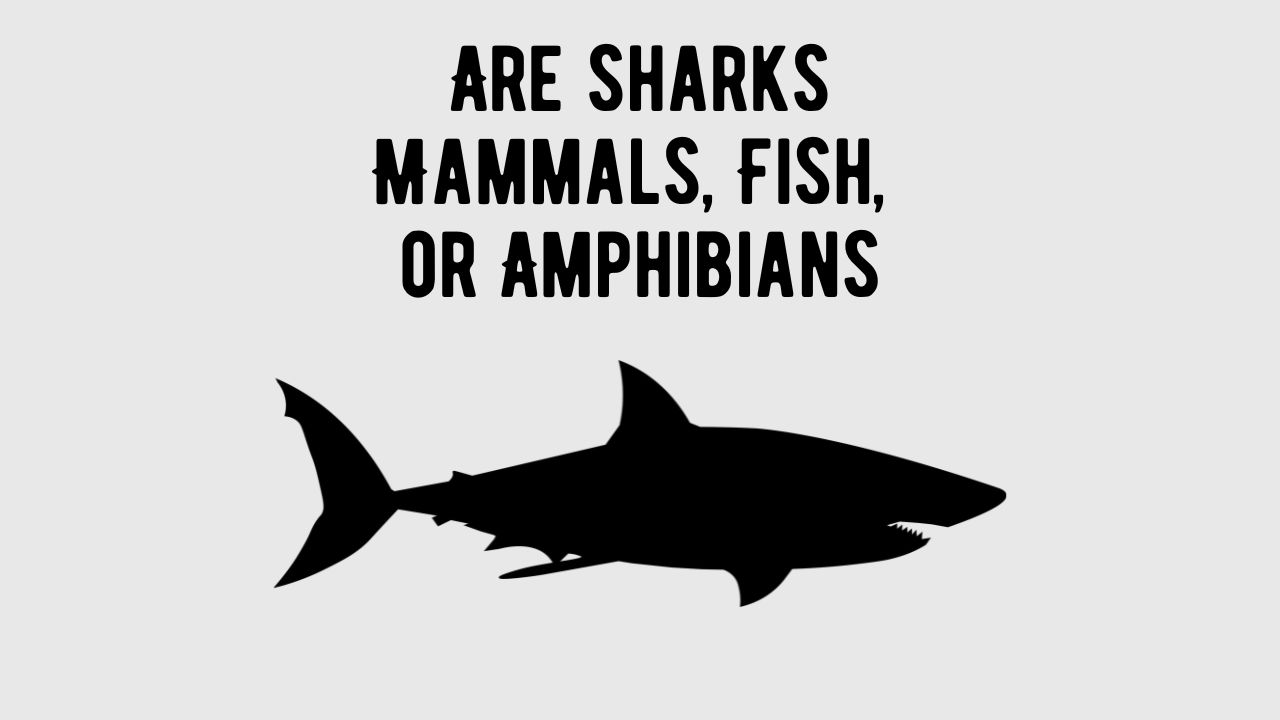Sharks, with their sleek bodies and powerful presence in the oceans, are often a subject of fascination and curiosity. One common question that arises is whether sharks are mammals, fish, or amphibians. In this comprehensive article, we’ll delve into the characteristics of sharks, exploring their biology, classification, and the reasons behind their categorization as fish. We’ll also address common misconceptions and conclude with a set of frequently asked questions to enhance your understanding of these incredible marine creatures.
The Basics of Shark Biology:
A. Classification of Sharks:
Sharks belong to the class Chondrichthyes, which includes cartilaginous fish. Unlike bony fish, which have skeletons made of bone, sharks have skeletons made of cartilage. This cartilaginous structure provides flexibility and allows them to navigate the water with agility. The subclass Elasmobranchii encompasses both sharks and rays.
B. Characteristics of Sharks:
- Cartilaginous Skeleton:
- As mentioned earlier, one of the defining features of sharks is their cartilaginous skeleton. This lightweight yet durable structure aids in their buoyancy and swift movements.
- Gill Slits:
- Sharks breathe through gills, and the presence of gill slits on the sides of their bodies facilitates the extraction of oxygen from water.
- Multiple Rows of Teeth:
- Sharks are known for their impressive sets of teeth. Unlike humans, sharks continuously shed and replace their teeth throughout their lives. Some species can go through thousands of teeth in a lifetime.
- Dermal Denticles:
- The skin of sharks is covered in tiny, tooth-like structures known as dermal denticles. These structures contribute to reduced drag in the water, allowing sharks to move efficiently.
- Two-Chambered Heart:
- Sharks have a two-chambered heart, which is less complex than the four-chambered heart found in mammals. This adaptation is suitable for their aquatic lifestyle.
Sharks as Fish:
A. Fish Characteristics:
Sharks are unequivocally classified as fish based on several key characteristics that align with the broader definition of fish:
- Aquatic Habitat:
- Like all fish, sharks live in aquatic environments, primarily in saltwater oceans. Some species can inhabit freshwater environments, but the majority are marine.
- Gills for Respiration:
- Sharks, like other fish, respire through gills. They extract oxygen from water as it flows over their gill filaments.
- Fins for Locomotion:
- Fish are characterized by their fins, which are used for propulsion and stability in the water. Sharks have various types of fins, including dorsal fins, pectoral fins, and caudal fins.
- Ectothermic (Cold-Blooded):
- Fish, including sharks, are ectothermic, meaning their internal body temperature is influenced by the surrounding environment. This is in contrast to mammals, which are endothermic or warm-blooded.
Reproduction in Sharks:
Sharks reproduce through a variety of methods, including oviparous, viviparous, and ovoviviparous reproduction. These terms refer to how the embryos develop and receive nourishment.
- Oviparous Reproduction:
- Some sharks lay eggs outside the body. The eggs develop and hatch externally, with the young sharks emerging fully formed.
- Viviparous Reproduction:
- In viviparous species, the embryos develop inside the mother’s body, and the pups are born live. The mother provides nourishment to the developing embryos through a placental connection.
- Ovoviviparous Reproduction:
- Ovoviviparous sharks retain the eggs within the body, but the embryos are self-sufficient and do not rely on a placental connection. The mother gives birth to live pups once they reach a certain stage of development.

Sharks vs. Mammals:
While sharks share some similarities with mammals, they also exhibit fundamental differences that place them firmly in the category of fish:
A. Live Birth in Some Species:
- Some sharks give birth to live young, similar to mammals. However, this live birth is a result of different reproductive mechanisms, and the term “viviparous” is used to describe this process in sharks.
B. Lack of Mammary Glands:
- One characteristic that distinguishes mammals is the presence of mammary glands for breastfeeding. Sharks lack mammary glands, and their young are nourished through various reproductive strategies.
C. Body Temperature Regulation:
- Mammals are endothermic, meaning they can regulate their internal body temperature independently of the external environment. Sharks, being fish, are ectothermic, and their body temperature is influenced by the surrounding water.
Addressing Common Misconceptions:
A. Shark as Amphibians:
- Unlike fish, amphibians are a separate class of vertebrates that includes frogs, toads, salamanders, and newts. Amphibians typically undergo a metamorphosis from aquatic larvae to terrestrial adults, a process not observed in sharks.
B. Myth of Shark Bones:
- While it is a common misconception that sharks have no bones, they do have skeletal structures made of cartilage. This misconception arises from the fact that sharks lack true bones, which are present in bony fish and mammals.
Frequently Asked Questions (FAQs):
- Q: Are sharks mammals or fish?
- A: Sharks are classified as fish. They belong to the class Chondrichthyes, which includes cartilaginous fish.
- Q: Do sharks have bones?
- A: No, sharks do not have bones. Their skeletons are made of cartilage, providing flexibility and buoyancy.
- Q: Can sharks give birth to live young?
- A: Yes, some shark species are viviparous and give birth to live young. However, the reproductive process differs from that of mammals.
- Q: Do sharks have mammary glands?
- A: No, sharks do not have mammary glands. Unlike mammals, they use various reproductive strategies to nourish their young.
- Q: Are sharks cold-blooded?
- A: Yes, sharks are ectothermic or cold-blooded, meaning their body temperature is influenced by the surrounding environment.
Summary
In conclusion, sharks are unequivocally classified as fish, specifically cartilaginous fish. While they share certain characteristics with mammals, such as live birth in some species, they lack key mammalian features like mammary glands and the ability to regulate internal body temperature. Understanding these distinctions enhances our appreciation for the diversity and complexity of life in the oceans.
